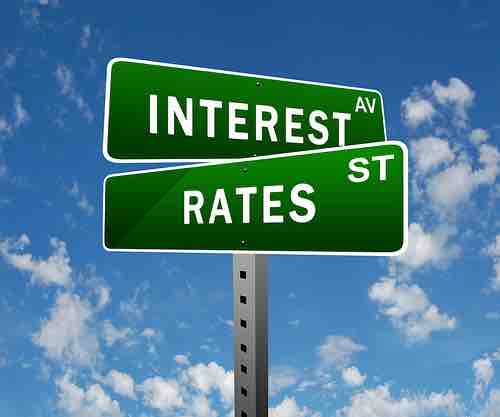Evaluating Interest Rates
The management of working capital takes place in the realm of short-term decision-making. These decisions are, therefore, based primarily on profitability, cash flows and their management. Many criteria go into the management of cash flows and subsequently the management of working capital -- including the evaluation of appropriate interest rates.
The interest rate most commonly used in working capital management is the cost of capital. The cost of capital, in a financial market equilibrium, will be the same as the market rate of return on the financial asset mixture the firm uses to finance capital investment. In other words, a company's cost of capital is the cost of obtaining funds for operation through the sale of equity or debt in the marketplace. In market equilibrium, investors will determine what return they expect from providing funds to a company. The return expected on debt depends upon the credit rating of the company, which takes into account a number of factors to determine how risky loaning funds to a company will be. The return expected from equity also involves a number of factors, usually centered around the operation of the company and its prospects for profitability. Some conventional rates of return expected for various types of companies include:
- Startups seeking money: 50% – 100%
- Early startups: 40% – 60%
- Late startups: 30% – 50%
- Mature companies: 10% – 25%
When evaluating short-term profitability, company's may use measures such as return on capital. ROC is shown as a percentage, determined by dividing relevant income for the 12 months by capital employed. Firm value is enhanced when, and if, the return on capital, which results from working-capital management, exceeds the cost of capital, which results from capital investment decisions. ROC measures are therefore useful as a management tool, in that they link short-term policy with long-term decision making.
As mentioned, working capital decisions are made with the short-term in mind. Thus, working capital policies aim at managing the current assets (generally cash and cash equivalents, inventories and debtors) and the short term financing, such that cash flows and returns are acceptable. Decision criteria that focus on interest rates include debtors management and short-term financing.
Debtors management involves identifying the appropriate credit policy -- i.e. credit terms which will attract customers -- such that any impact on cash flows and the cash conversion cycle will be offset by increased revenue and, hence, return on capital (or vice versa). Interest rates can affect this decision because of the time value of money. If inflation is at a high level or there are opportunities foregone because of lack of working capital, a firm will more than likely have a stricter credit policy.
Short-term financing involves identifying the appropriate source of financing, given the cash conversion cycle. For instance, inventory is ideally financed by credit granted by the supplier; however, it may be necessary to utilize a bank loan or to "convert debtors to cash.". Another possible solution is to use services from companies sell outstanding invoices to raise working capital for their clients. Obviously interest rates will play a vital role in determining whether an option such as a bank loan is viable for obtaining short-term financing.

Interest
Interest rates of working capital financing can be largely affected by discount rate, WACC and cost of capital.